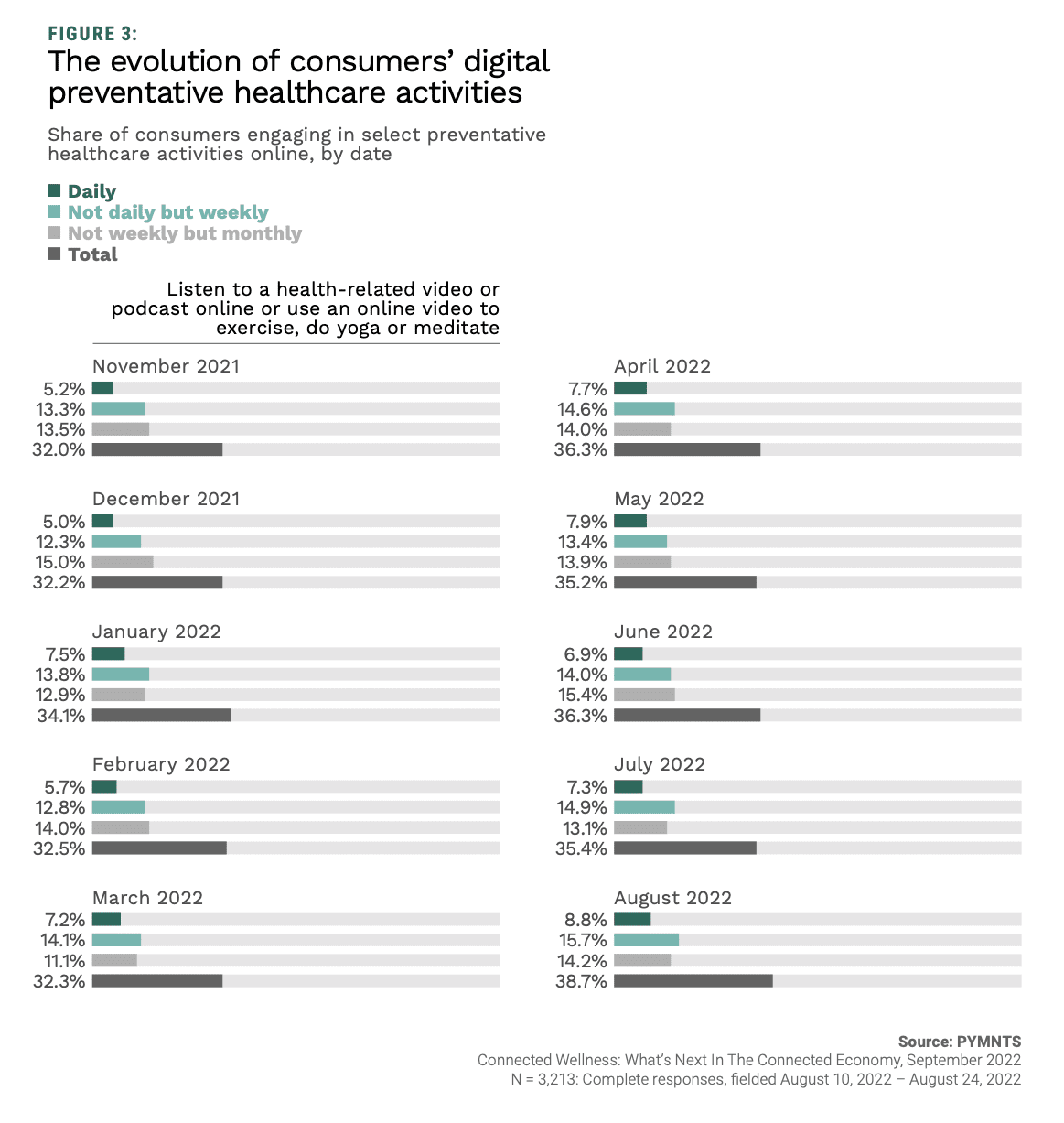Health-Tracking Wearables Are a Fit for 43% of US Consumers

The stylish side of preventive healthcare comes in the form of digital wearables like Apple Watch, Fitbit and smart rings, the use of which has seen astronomical growth since 2021.
We examined this in the study “Connected Wellness: What’s Next In The Connected Economy,” a PYMNTS report with research sponsored by CareCredit, surveying over 3,200 U.S. consumers to discover steps they’re taking to head off health problems, with a focus on use of digital tools.
We found that in just the nine months prior to August 2022, 10 million more U.S. consumers took to using websites and wearables to monitor vitals and chronic health conditions, concluding that 148 million U.S. consumers — roughly 44% of the total U.S. population — are now utilizing some form of preventive digital healthcare tool.
Get your copy: Connected Wellness: What’s Next In The Connected Economy
With COVID-19 almost certainly a factor in the rather sudden spike in healthcare wearables and web tools, it’s the psychological impacts that are getting those attention, with the report noting that 31% of consumers reported using sites or apps to support their mental health in August, “up 32% from November 2021. This is by far the fastest growth we’ve seen in any type of preventative health-related activity.”

Per the study, “use of wearables like Fitbit, Apple Watch and smart rings is also rising, albeit not at the same blistering pace as mental healthcare apps. Forty-three percent of consumers used some type of wearable health technology to automatically track, store and analyze their health information in August, for a total increase of 17% from November 2021. Wearable technologies continue to be the most common way consumers use digital tools to manage their health.”

Interestingly, the most connected consumers use mental healthcare apps the least, though 75% report using at least one in August. Compare that to November 2021, when 75% of integrated tech consumers used wearables and just 45% used mental health-related apps.
“This shows the widespread and rapidly rising demand for different preventative healthcare technologies among integrated tech consumers,” the study states.
See it now: Connected Wellness: What’s Next In The Connected Economy
